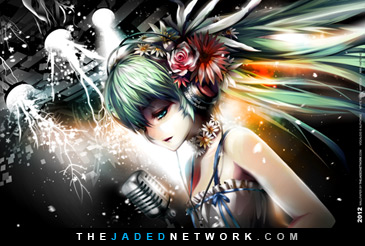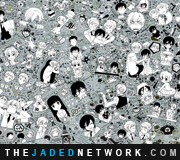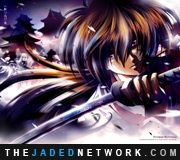-
-

Vaendryl @ Wednesday, September 7, 2011 -- 7:25 am
I'd like to add "どきゅーん”、expressing big surprise.
saw it in a manga, looked it up here, didn't find it so googled it and found this reference: http://ameblo.jp/kokomix-mms/entry-10695531760.html
Added, thanks!
Faye @ Thursday, August 25, 2011 -- 5:21 am
Hello, I'd like to know the translation of the one encircled with grey. I tried with the "ku" category but I can't find... >.< It is perhaps some kind of double sfx that I mistook for a single one?
http://i54.tinypic.com/2j3f86h.jpg

Ann @ Sunday, August 21, 2011 -- 10:29 am
I'm very inexperienced at this, and I'm having problems with a character, I've seen it a couple of times, but can't find what it is >.<
I think it is *twitch* or *start* but if you could help me identify the character that would help a lot.
http://imageshack.us]ImageShack.us

rurugi @ Wednesday, July 13, 2011 -- 9:39 pm
is it better to use katakana or hiragana?
In terms of SFXs, it's either/or. They're both the same sound-wise and meaning-wise. Some mangaka will use hiragana, some will use katakana, and some will use a mix of both (and at that point, it really just boils down to adding contrast by using different alphabets for each sound).
However, formally hiragana is used as a part of native Japanese words, and is also used as "furigana" to help people get through Kanji characters (since Kanji characters are not a phonetic). While Katakana characters are used for "loan" words, like "milk" becomes "miruku" and is written in Katakana. History also says that hiragana was considered women's writing (softer lines, with lots of curves), while katakana was boy's writing (sharper lines, more masculine).
Vashti @ Saturday, July 2, 2011 -- 6:41 am
Here's one for you - すん
1. to take a coldhearted attitude; to be curt, blunt or cold;
2. to be concerned inside, while pretending no surface concern;
3. to carry oneself well, in the manner of a geisha.
[if anyone knows what else it might mean, or can suggest a meaning for ビワ which isn't music-related, I would love them forever..?]
Added, thank you!
I looked up ビワ but it only translates as a Japanese lute from what I found. Do you have an image example I could use for context?
Julia @ Saturday, June 25, 2011 -- 3:57 pm
"Beshi" apparently is a karate chop sound or a smack or something.
http://img683.imageshack.us/img683/584/beshi.png
Added, thank you! :)
Julia @ Tuesday, June 21, 2011 -- 8:35 am
Here is one: kaki kaki, it's the sound of scribbling or drawing.
http://img545.imageshack.us/img545/4861/kakikaki.png

Jae @ Wednesday, June 15, 2011 -- 7:13 am
just found this site and its awesome but -stupid question- does the comma ドス (,) どす indicate that those two signs are different ways of showing it or that you need both at the same time?
You only need one. Sometimes manga will use the Katakana version (ドス) and sometimes they'll use the Hiragana version (どす) - both mean the same thing.
Julia @ Tuesday, June 14, 2011 -- 7:09 pm
Do you have any requirements for submitting image examples?
Nope, no requirements. Just as long as the Japanese characters are legible enough and there is enough context for interpretation.
Stewart @ Sunday, June 12, 2011 -- 9:58 am
This is a neat resource, and a helpful one, but why in the heck is it alphabetized on the romaji instead of organized in proper order? That's a little confusing.
also: SFX is, by itself, plural as well as singular--it stands for Sound Effect/s/, after all. SFX's means "belonging to SFX". Might want to change that.
-
 Copyright © 2025 theJADEDnetwork.Com
Copyright © 2025 theJADEDnetwork.ComAll Rights Reserved
Use of this Site and/or any of its materials signifies
user agreement to the TJN Terms and Conditions













































